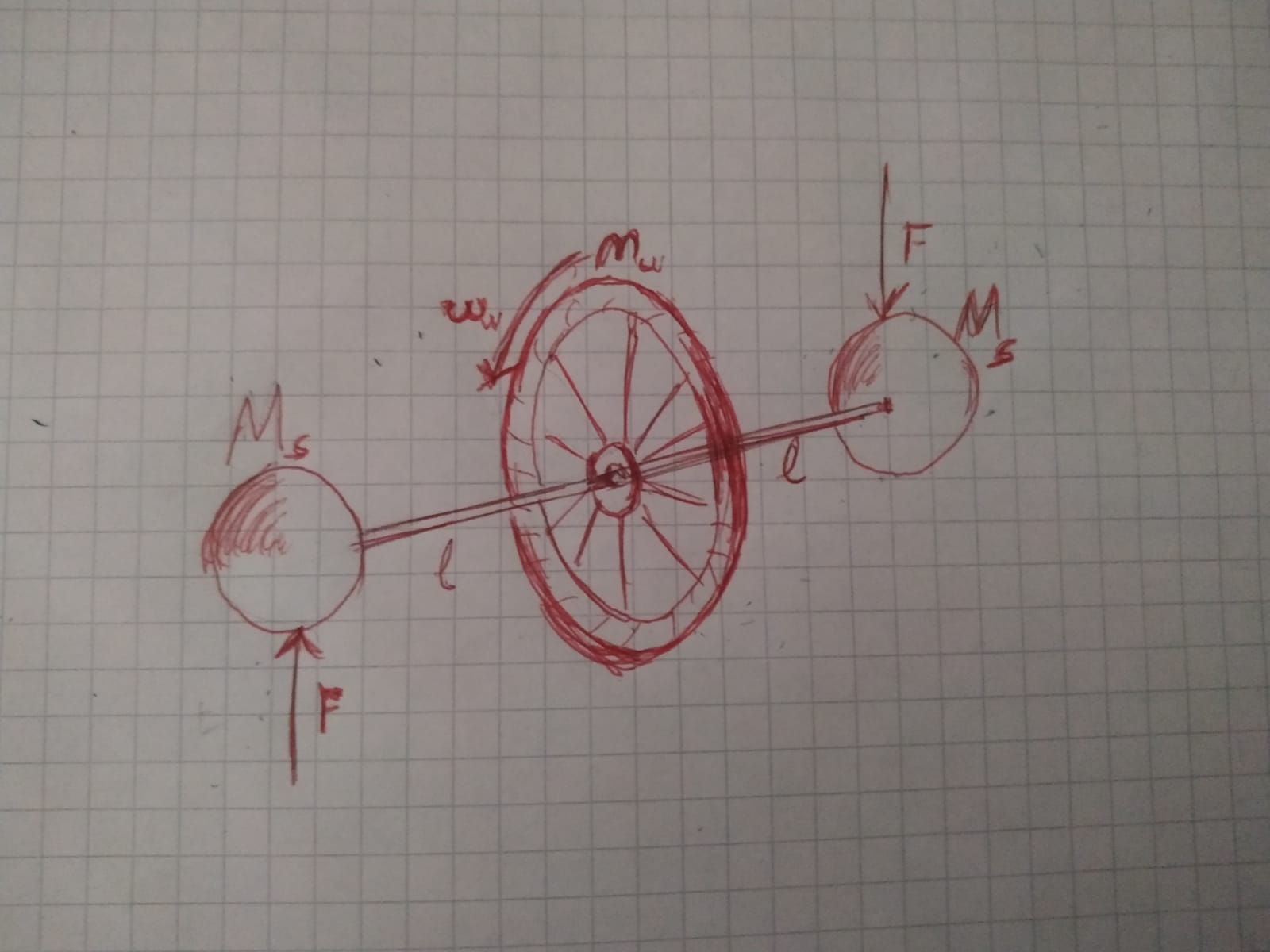In rod reference frame:
- origin is center of the rod,
- pitching axis is coinciding with the rod
- external torque is applied in rolling axis
If a torque is applied to non-rotating object(the rod and the spheres), always in the same magnitude and a wheel is rotating always(not sliding to the right or the left)at the center of the rod connecting spheres as shown on the picture,
assuming:
the wheel rotates around the rod which is coinciding with angular velocity vector of the wheel, bearings are frictionless
this experiment is realized in a vacuumed gravity-free place
rod mass is ignored, and for simplicity you can assume sphere mass is a point mass with some value
how will torque be shared between the wheel and spheres?
as a result of torque applied to the wheel, in addition to rotation around rolling axis, the wheel will try to rotate around yawing axis due to gyroscopic effect but it will also try to rotate spheres, what will be result of this fact?
If you explain behavior of this object based on reference frames i would be pleased.

